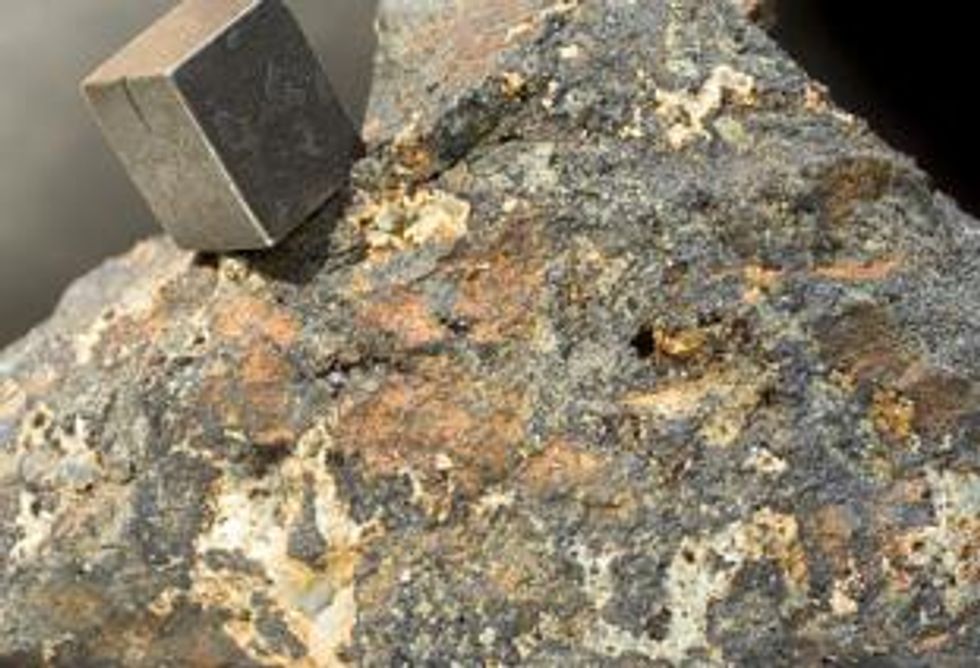- AustraliaNorth AmericaWorld
Investing News NetworkYour trusted source for investing success
Purpose Bitcoin ETF
Soma Gold Corp.
Black Swan Graphene
Silver47 Exploration
- Lithium Outlook
- Oil and Gas Outlook
- Gold Outlook Report
- Uranium Outlook
- Rare Earths Outlook
- All Outlook Reports
- Top Generative AI Stocks
- Top EV Stocks
- Biggest AI Companies
- Biggest Blockchain Stocks
- Biggest Cryptocurrency-mining Stocks
- Biggest Cybersecurity Companies
- Biggest Robotics Companies
- Biggest Social Media Companies
- Biggest Technology ETFs
- Artificial Intellgience ETFs
- Robotics ETFs
- Canadian Cryptocurrency ETFs
- Artificial Intelligence Outlook
- EV Outlook
- Cleantech Outlook
- Crypto Outlook
- Tech Outlook
- All Market Outlook Reports
- Cannabis Weekly Round-Up
- Top Alzheimer's Treatment Stocks
- Top Biotech Stocks
- Top Plant-based Food Stocks
- Biggest Cannabis Stocks
- Biggest Pharma Stocks
- Longevity Stocks to Watch
- Psychedelics Stocks to Watch
- Top Cobalt Stocks
- Small Biotech ETFs to Watch
- Top Life Science ETFs
- Biggest Pharmaceutical ETFs
- Life Science Outlook
- Biotech Outlook
- Cannabis Outlook
- Pharma Outlook
- Psychedelics Outlook
- All Market Outlook Reports
Nickel-copper sulfide deposits are the source for most of the world’s nickel, and magmatic platinum group metal deposits. These deposits have significant economic value.
By Leia Michele Toovey- Exclusive to Copper Investing News
Nickel-Copper-PGE deposits are a class of deposits that, as the name suggests, contain nickel, copper and platinum group elements. These deposits are generally broken into two broad categories, one category hosts nickel and the platinum group elements, the other category hosts primarily nickel and copper. We will focus on the nickel-copper sulfide deposits as they are the class of interest when it comes to copper deposits.In nickel-copper sulfide deposits, nickel is the main economic commodity; however, these deposits also host significant amounts of copper, which is extracted as either a by-product or co-product. In addition, the deposit may also host other valuable by-products including cobalt, platinum group elements and silver. Among Ni-Cu deposits, Ni grades are typically between 0.7 and 3 percent, and Cu grades are between 0.2 and 2 percent. Ore tonnages of individual deposits range from a few hundred thousand to a few tens of millions.
Formation
These deposits are formed from upper-mantle magmas that contain small amounts of nickel, copper, PGE and most commonly, minor amounts of sulfide minerals. As these magmas ascend through the earth’s crust they cool. If the source magma contains enough sulfide minerals, or if sulfide is added from the country rock, a separate sulfide liquid forms as droplets dispersed throughout the magma. Because the partition coefficients of nickel, copper and PGE, as well as iron, favor sulfide liquid over silicate liquid, these elements preferentially transfer into the sulfide droplets from the surrounding magma. On further cooling, the sulfide liquid crystallizes to form the ore deposits that contain these metals.
Nickel-copper sulfide deposits can be broken down into further subtypes. In Sudbury, Ontario, the only known representative of the sub-type meteorite impact can be observed. In Rift and Continental Flood Basalt-Associated Subtype, the magmas that form the Ni-Cu deposits are the products of the magmatism that accompanies intra-crustal rifting events. An example of this sub-type is the Noril’sk-Talnakh in Russia. This deposit contains and impressive amount of mineral- 12.6 MT of nickel.
The Komatiitic Volcanic Flow and Sill-Associated Subtype occurs for the most part in two different settings. One setting is as komatiitic volcanic flows and sills found mostly in Neoarchean greenstone belts. The second setting is as Paleoproterozoic komatiitic sills associated with rifting at cratonic margins.
Economic value
These deposits have significant economic value. Nickel-copper sulfide deposits are the source for most of the world’s nickel, and magmatic platinum group metal deposits. Sometimes these deposits are found as single bodies; however, they can also be found in clusters and even large belts spanning hundreds of kilometers. In the case of large groups of deposits, they are called districts. In total there are 142 Ni-Cu-PGE deposits and districts in the world for which grade and ore tonnage data have been reported that contain more than 100,000 tonnes of resources and/or production. Among the global deposits/districts there are 51 Ni-Cu deposits/districts and 5 PGE deposits/districts with greater than 10 million metric tonnes (MT), and 13 Ni-Cu deposits/districts and 2 PGE deposits/districts with greater than 100 Mt.
World Class Ni-Cu sulfide deposits
Two giant Ni-Cu districts stand out above all the rest in the world: Sudbury, Ontario, and Noril’sk-Talnakh, Russia, with ore tonnages of 1645 and 1903 Mt, respectively Other major Ni-Cu districts include the Thompson, Voisey’s Bay, and Raglan districts in Canada; the Jinchuan, China; Kambalda, Australia; and Pechenga, Russia. Sudbury and Noril’sk-Talnakh are the only districts that contain in excess of 10 million tons of contained nickel. The other important districts tend to have Ni contents of about 1 to 6 million tonnes.
Miners and explorers with interests in Nickel-Copper-PGE
IMX Resources NL (ASX:IXR)
Majescor Resource Inc. (TSXV:MJX)
MMC Norilsk Nickel (LON:MNOD)
Latest News
Investing News Network websites or approved third-party tools use cookies. Please refer to the cookie policy for collected data, privacy and GDPR compliance. By continuing to browse the site, you agree to our use of cookies.
